Taormina Cathedral
Between Porta di Mezzo and Porta Catania is the oldest part of the city, and its center is the Duomo Square. Here we see the medieval Basilica of San Nicolo di Bari, which is the Cathedral of Taormina (Duomo di Taormina). It is well known that during the time of the Sicilian Emirate (10th-11th century) in Taormina there was a church of San Francesco di Paola, on the current Viale Apollo Arcageta, now there is a museum. The parishioners were persecuted by the Saracens, up to the murder of Bishop Procopius. During the Norman era, the church was part of the Diocese of Messina. In the 11th and 13th centuries, Sicily was part of the Holy Roman Empire under the Swabian Hohenstaufen dynasty. During this period, the existing layout of the historical core of the city was formed. In the 13th century, the old church was demolished and a large Romano-Gothic church was built in its place. At the moment, it is one of the oldest buildings in the city, of course, after the gigantic ruins of the Roman Tawormenium.
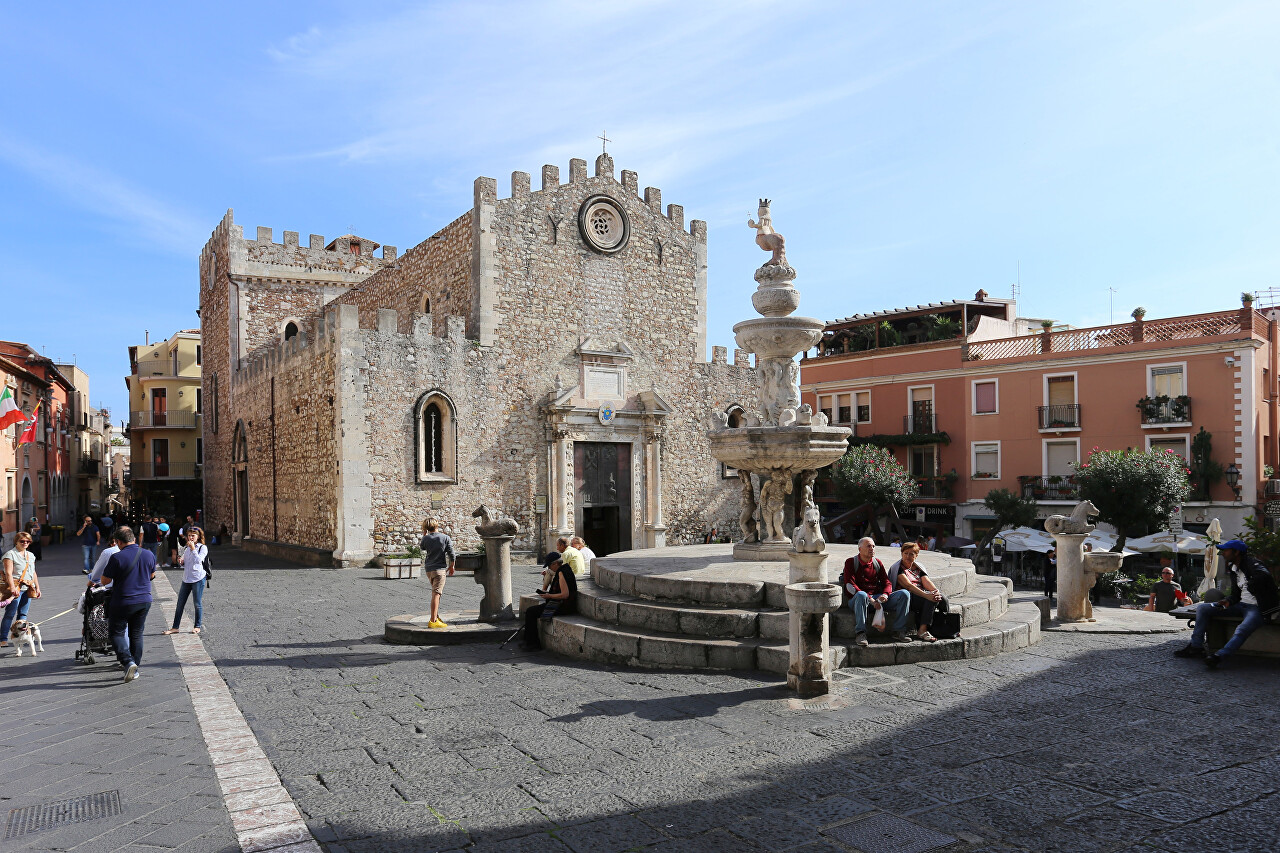
The basilica building has a typical architecture for that era and looks more like a defensive structure than a religious institution. This type of building is called ecclesia munita (fortress church). The coast of Sicily has always suffered from pirate attacks, and the thick stone walls of such churches served as a shelter for the inhabitants, and the battlements on the eaves of the roof served the same function as on the fortress walls.
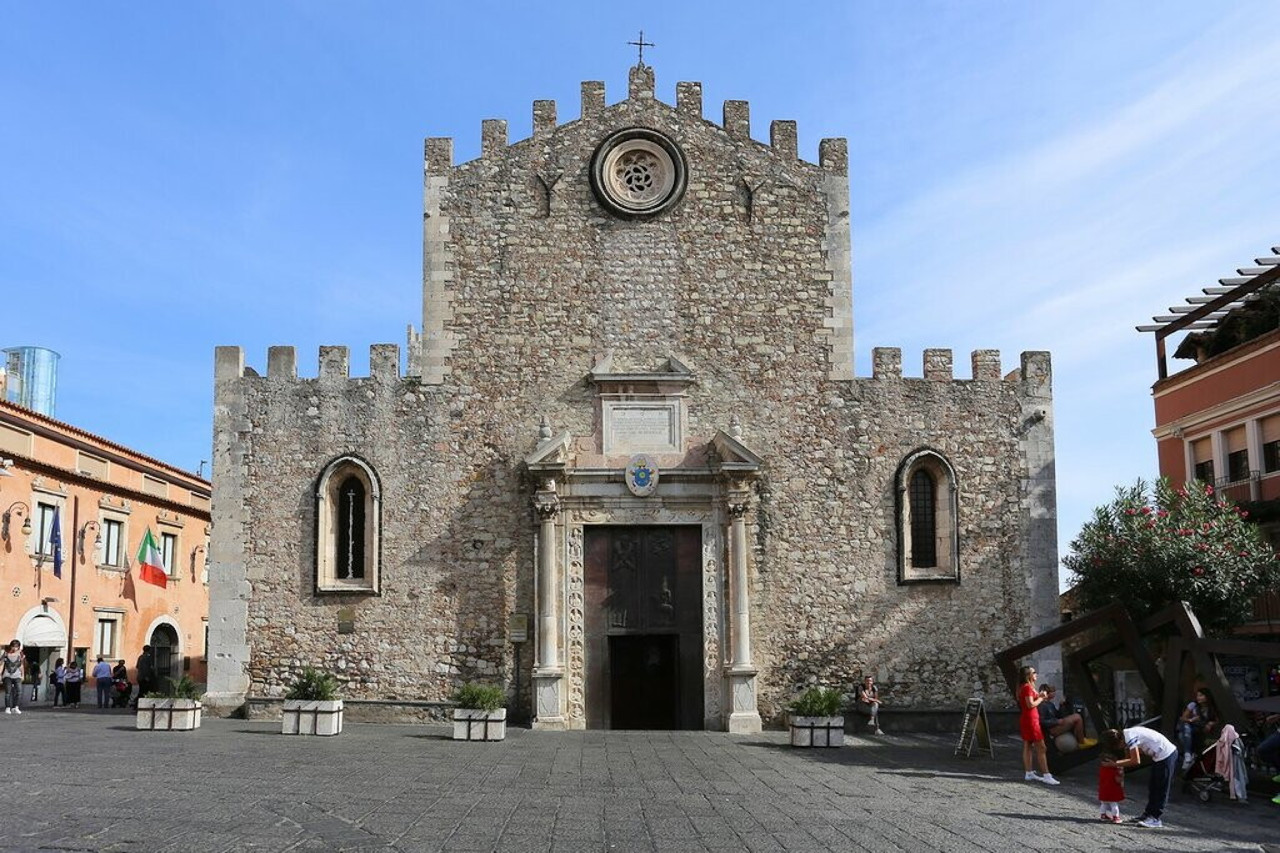
In the Aragonese era (15th-16th century), rosette windows made of Syracuse stone appeared on the main and side facades, and the main portal was decorated in the Renaissance style. This happened in 1636, as evidenced by the inscription on the marble plaque. Here we see two fluted columns in the Corinthian style, above the capitals of the columns bas-reliefs depicting angels.
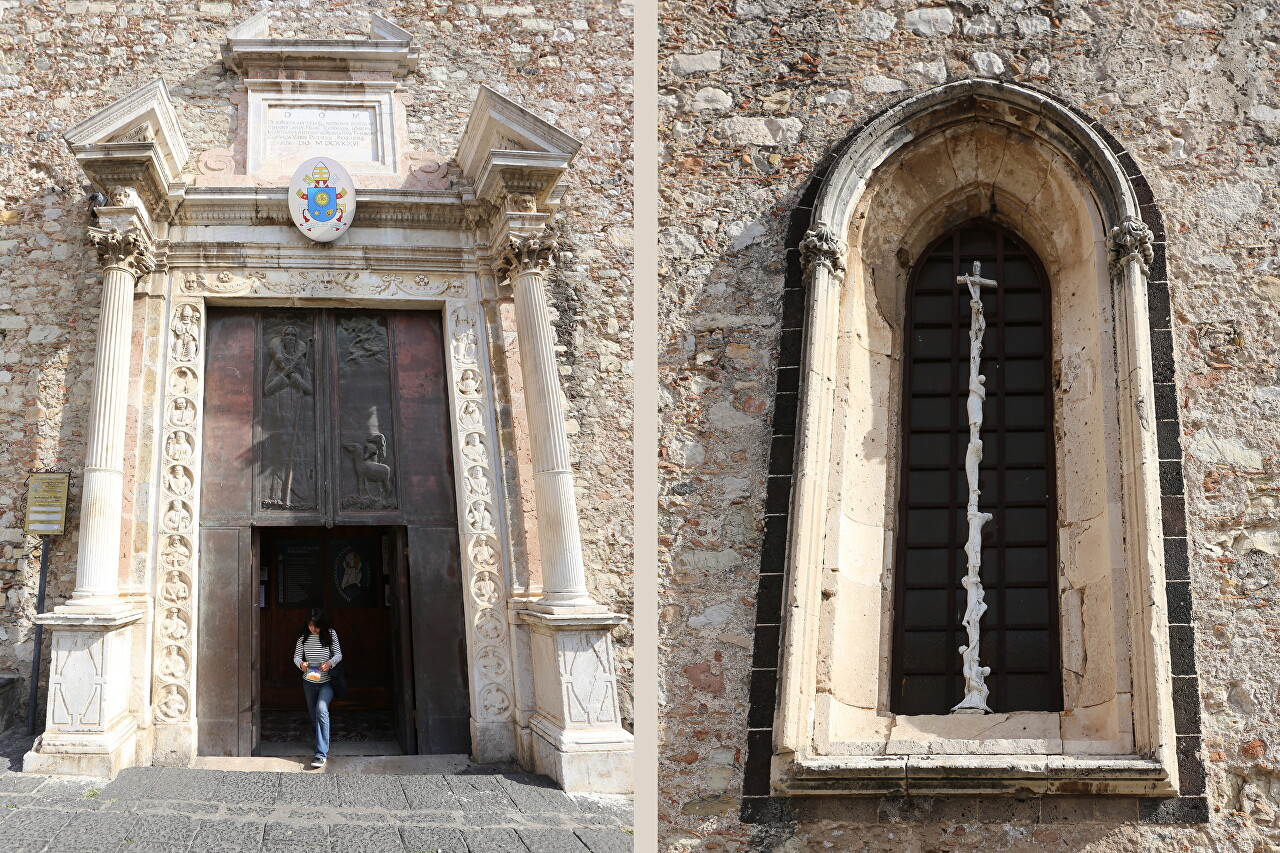
Twenty-two images are depicted on the doorposts: Saint Peter with the keys to paradise, Saint Paul with the sword of faith and other apostles, as well as Saint Nicholas of Bari and Saint Pancratius, patron saint of Taormina. Four images of animals symbolize the evangelists: the lion of St. Mark, the eagle of St. John, the Bull of St. Luke and the angel of St. Matthew. Identification At the top, on each side of the marble frame, there are two blessing bishops with a mitre and a pastor. The western portal was built in the second half of the 15th century and is decorated with bas-reliefs, while the eastern portal in the Sicilian Gothic style dates back to the first half of the 16th century.
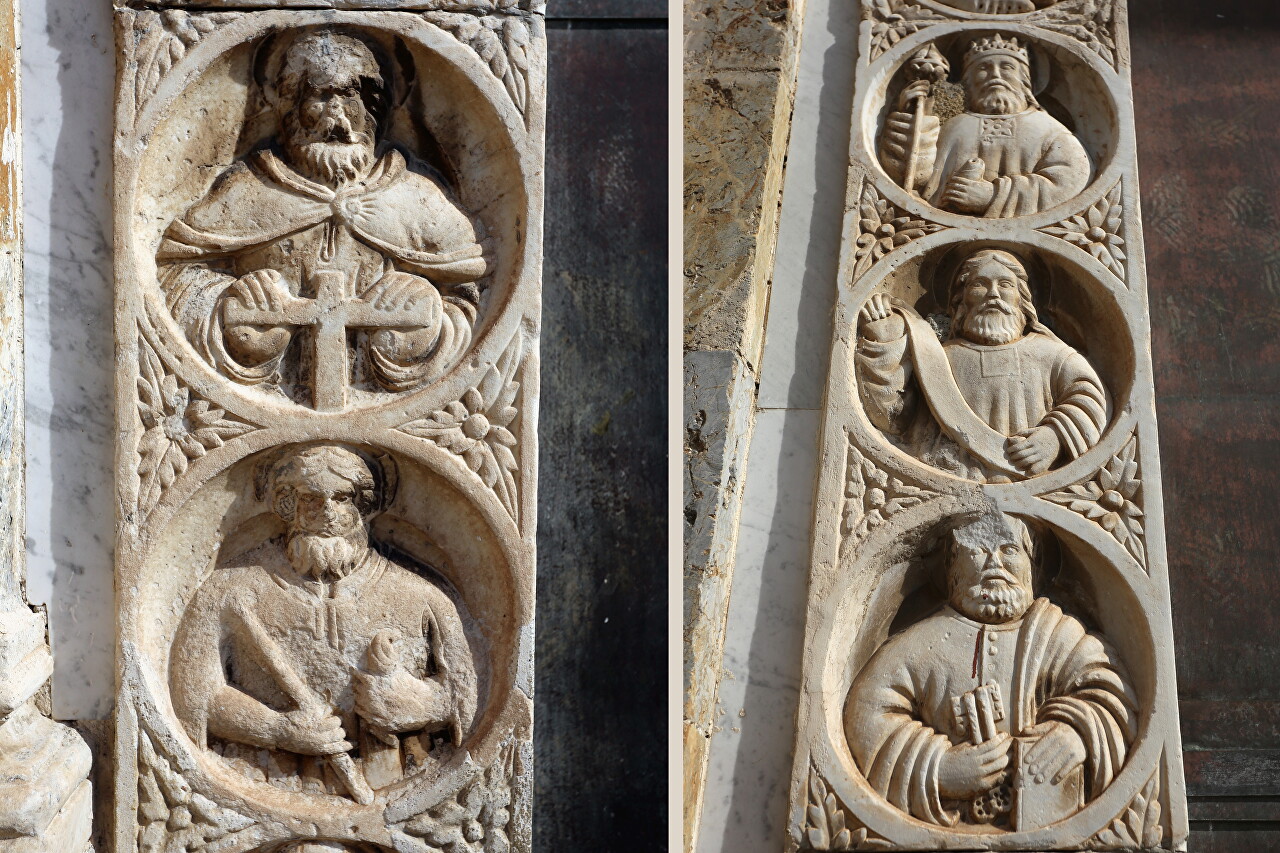
Inside, the church is a Latin cross with three naves. The main nave is separated from the side by six columns of pink marble, borrowed from the ruins of an ancient theater. The ceiling is supported by wooden beams with carvings in the Gothic style.
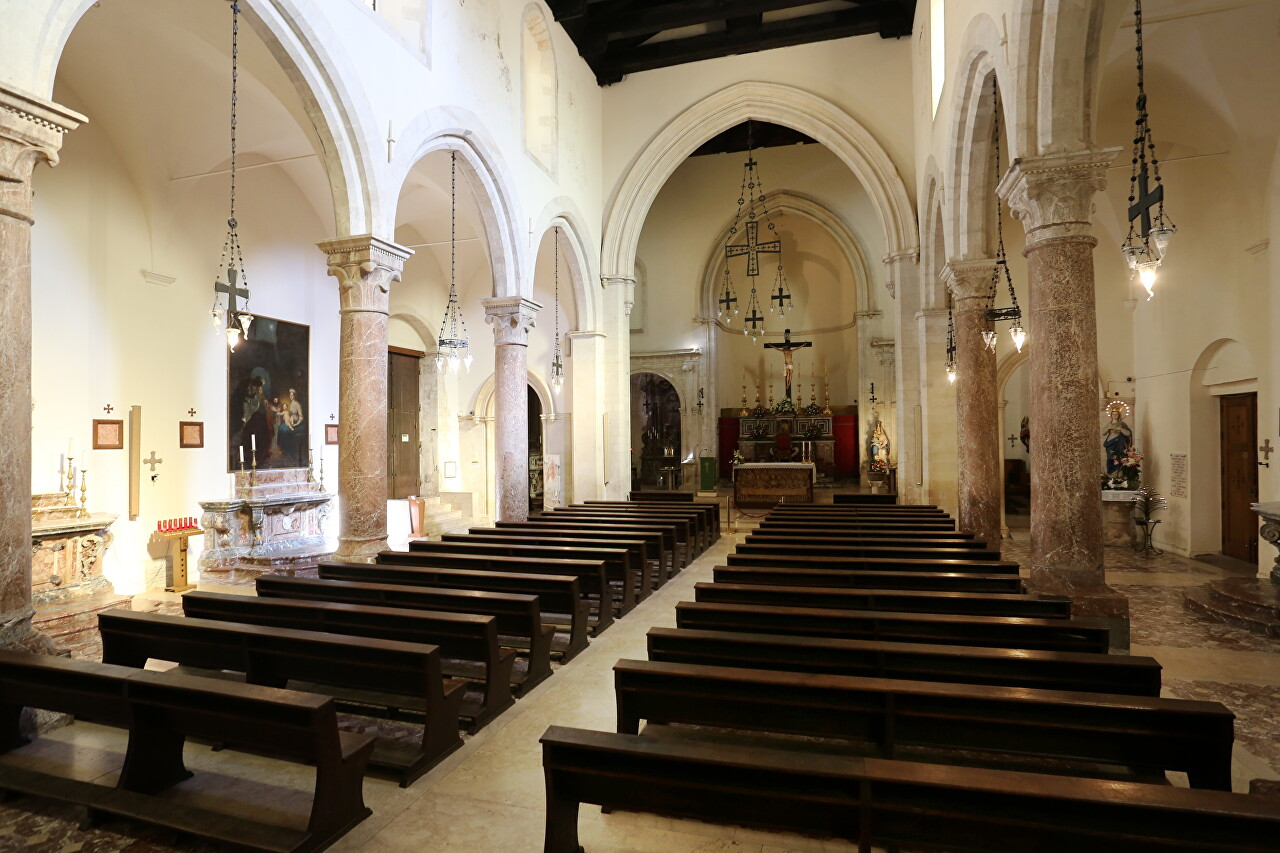
To the left of the altar is the Baroque Chapel of the Holy Communion, to the right is the Chapel of the Madonna of Grace, which was moved from the demolished Gothic Chapel of St. Peter in 1747.
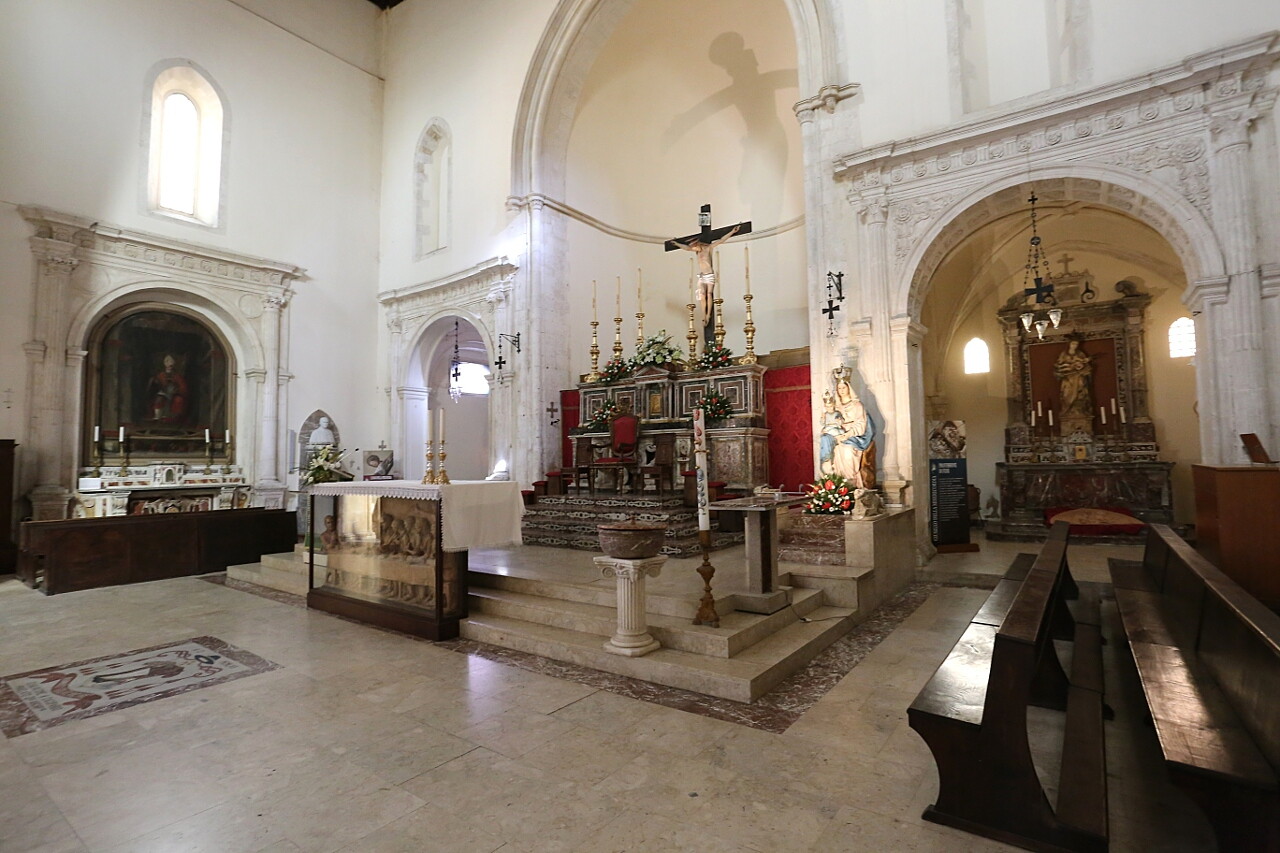
In the right nave is a painting of the Visitation of the Virgin Mary with Saints Joseph and Zacharias, painted by Antonino Giuffre in 1463.
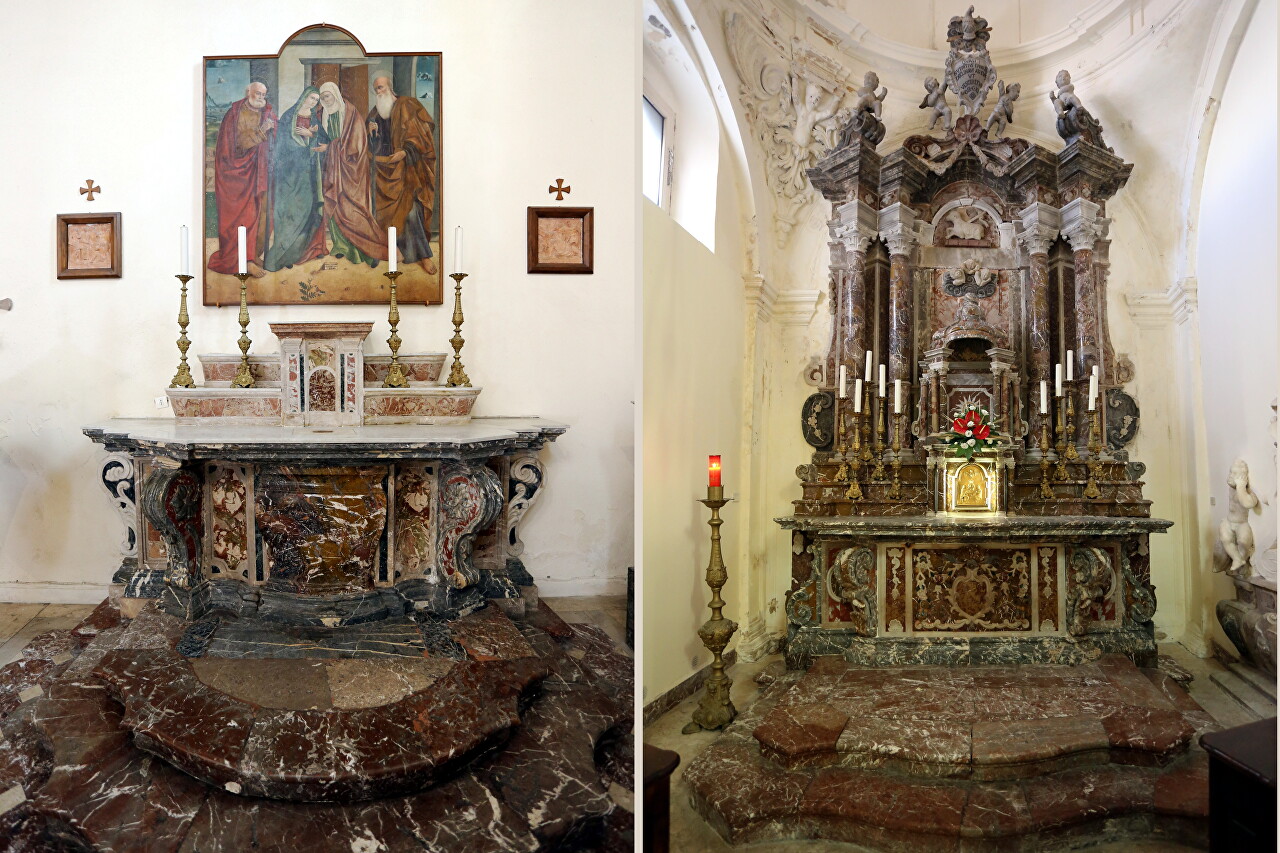
In the same nave you can find a polyptych by Antonello de Saliba (1504), the first panel shows the Madonna and Child with Saints Jerome and Sebastian, the second panel shows Pieta with Saints Lucy and Agatha, and the panel below shows the Last Supper.
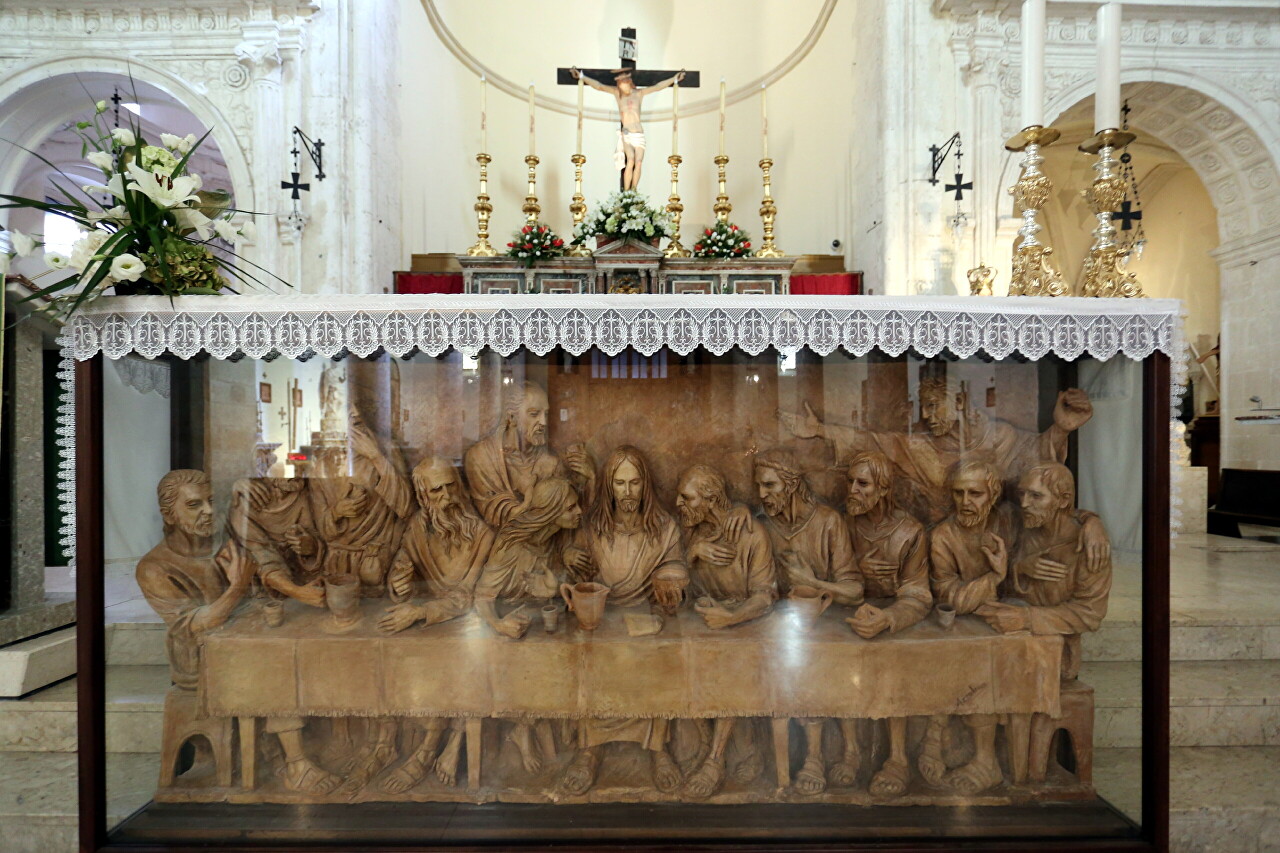
At the entrance, there is a 16th-century statue of Saint Agatha by Martino Montanini.
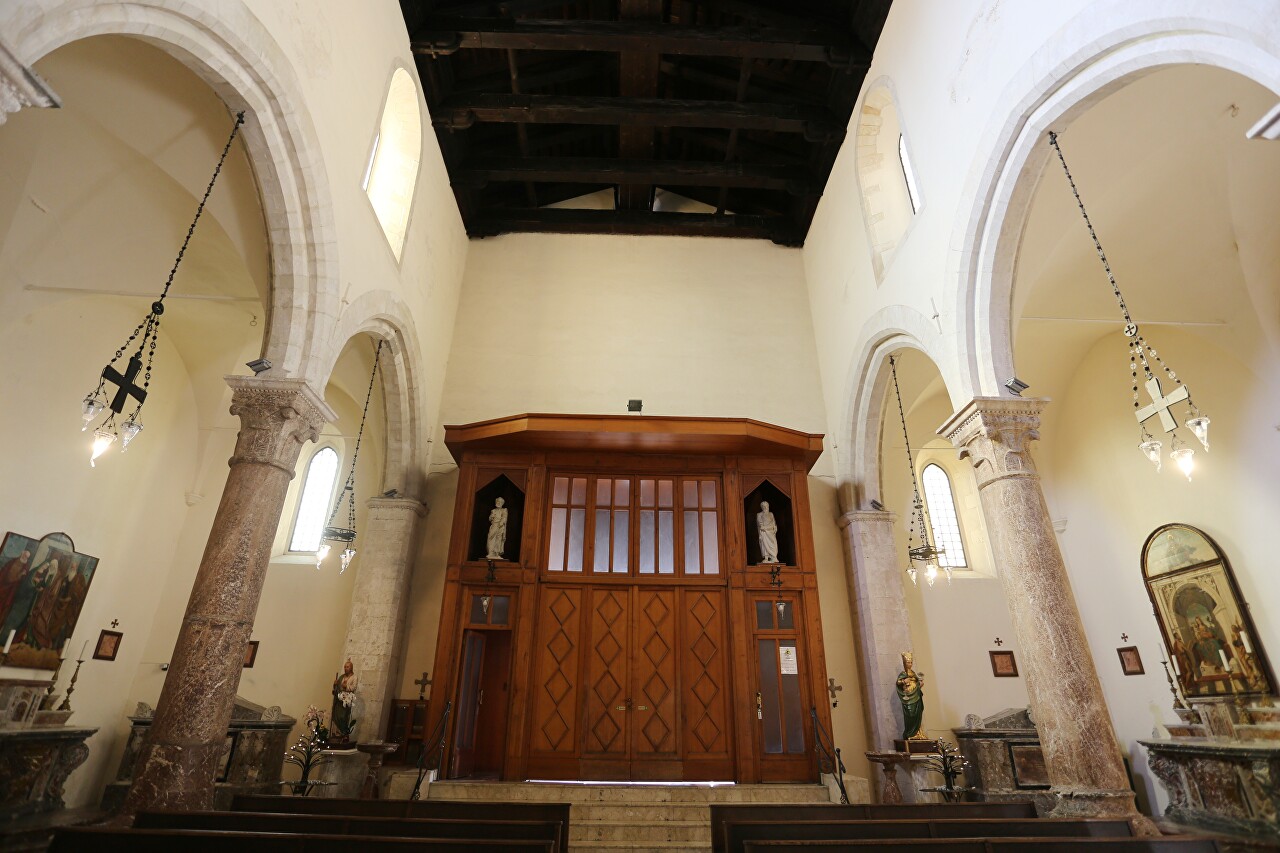
In the left nave is the Mother of God enthroned with the infant between John the Baptist and the prophet Elijah, while the lunette depicts the Eternal Father and a 16th-century Crucifix painted on wood by Alfonso Franco.
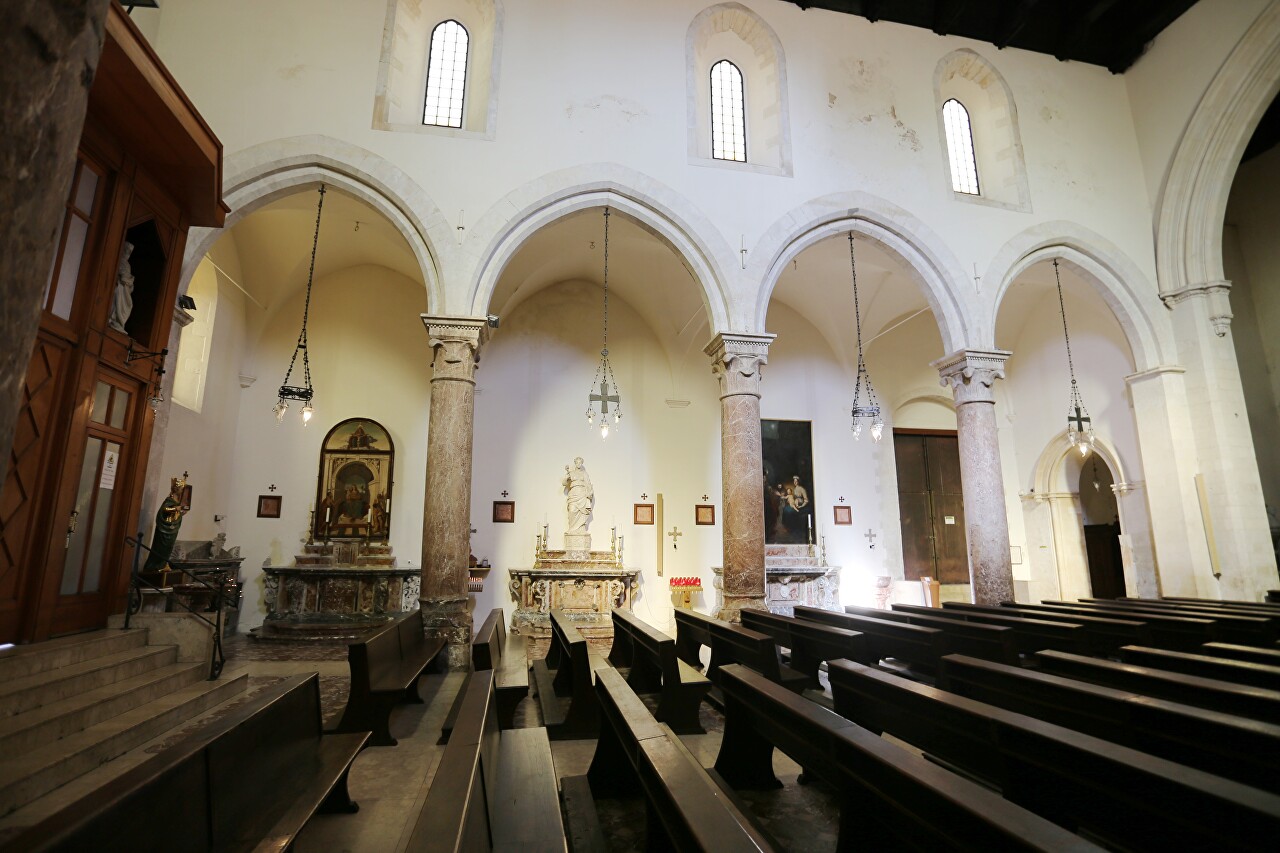
The most valuable piece of art in the cathedral is the Byzantine Madonna icon, painted in oil in the Eastern Orthodox style, covered with a layer of silver and inlaid with semiprecious stones.
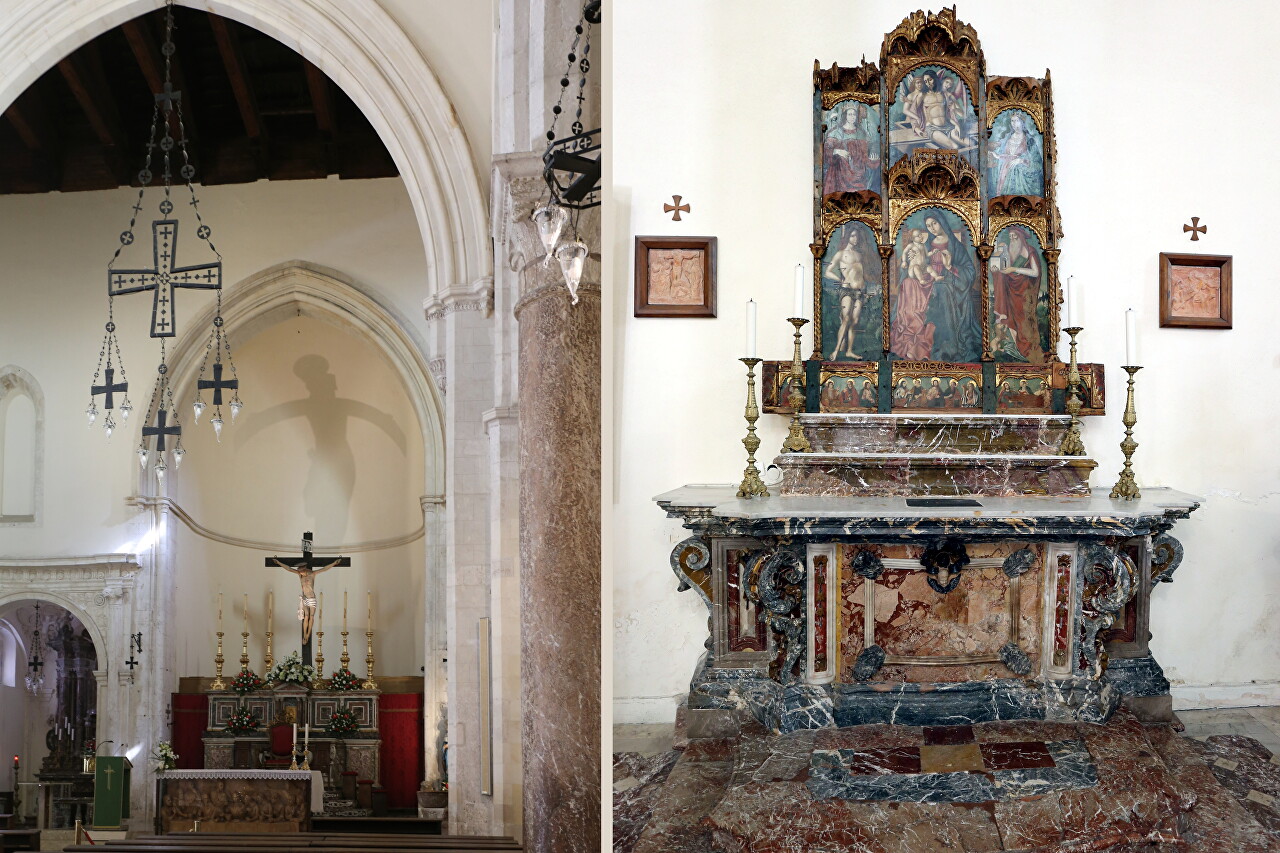
From 1945 to 1948, the church was completely restored by the Neapolitan architect Armando Dillon. The Baroque ceiling molding was removed, revealing the Gothic carvings of the ceiling beams. On February 6, 1980, Pope John Paul II granted the church the status of a Minor Basilica.
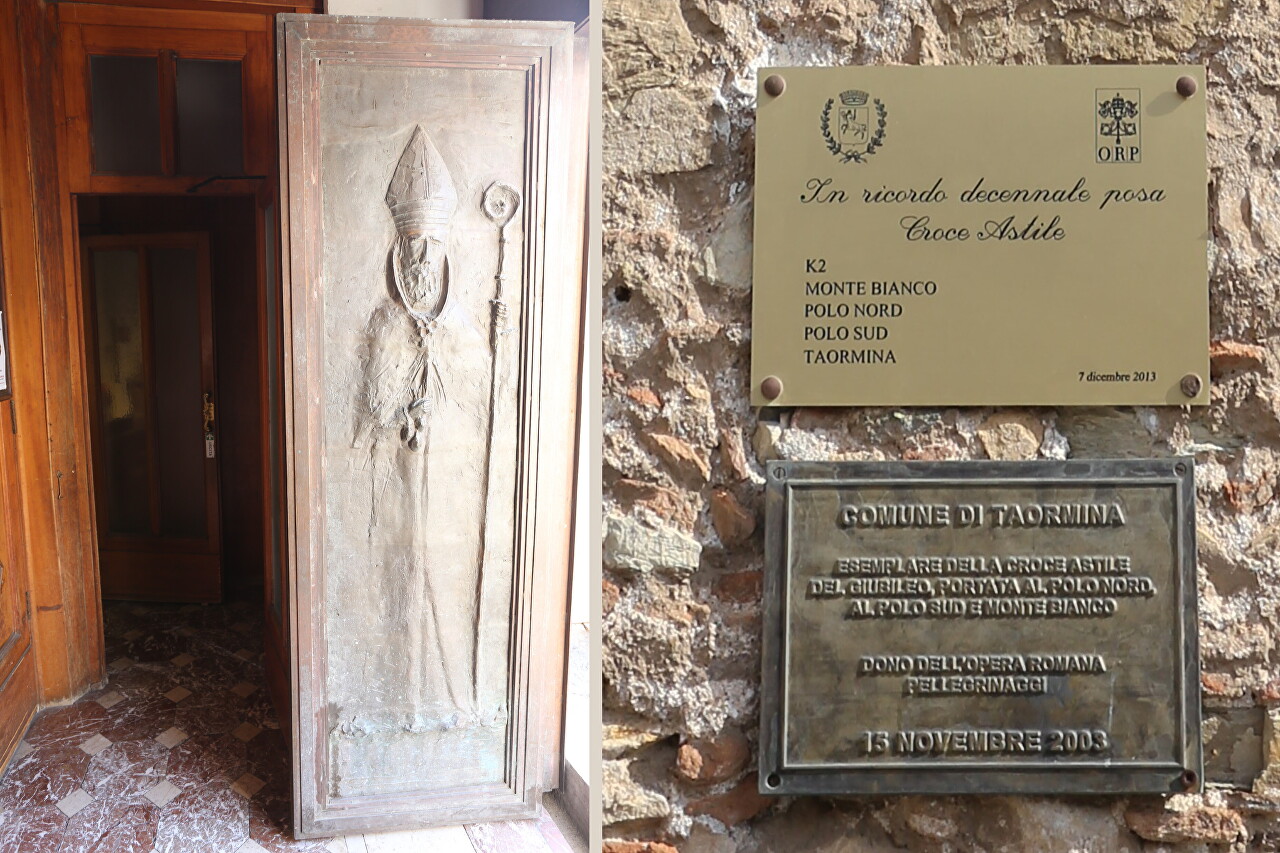
The Cathedral Basilica of Taormina is open to the public daily from 8: 30 to 20: 00.